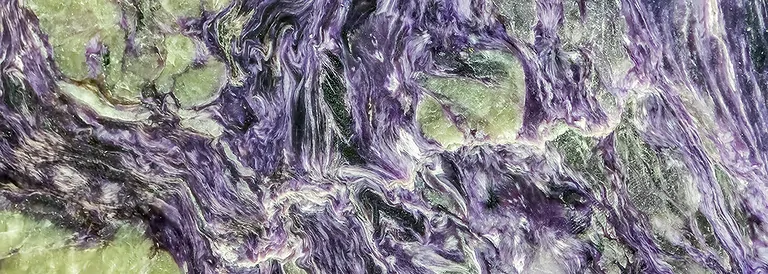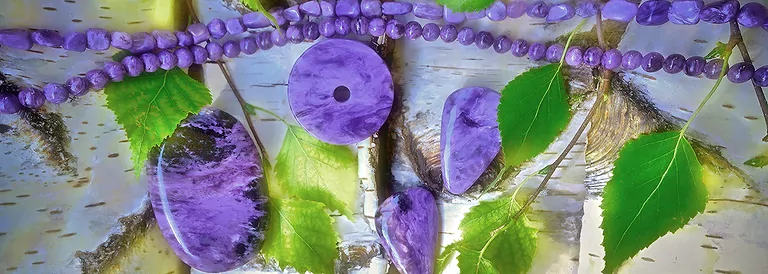
Charoite - Bearing, effect and application
Charoite supports to make mindful but yet swiftly the necessary decisions. Determination is strengthened, so that even emerging obstacles can be overcome. Full of energy, but still calm, we tackle our projects. The strengthening of the power of observation - also towards ourselves - is another quality that Charoite conveys. In this way, the overview can be maintained before we think we will fail due to the amount of demands. One thing after the other is done, even if the mountains of work initially seem infinitely high.
Mineralogical profile Charoite
Chemical Formula: (Ca,Na)4(K,Sr,Ba)2[(OH,F)2Si9O22] - H2O
Mineral class: complex, mineral-rich and hydrous layered silicate.
Origin: metasomatic, in the contact zone between igneous and metamorphic rocks
Color: purple, occasionally pink; with black, greenish-yellow or copper-colored inclusions and interesting accessory minerals, e.g., Aegirine, pectolih, steacyite, and tinaksite, as well as quartz and Feldspar
Gloss: Glass to silky luster
Crystal system: monoclinic
Moh hardness: 5 to 6
Cleavability: perfect splitability, uneven fracture
Source, main countries: Russia (Eastern Siberia) in the deposit "Sirenewy Kamen" (lilac rock), Chile.
Appearance: fibrous to dense masses with typical flow textures reminiscent of enamel glazes
Use: Charoite is used in arts and crafts in Russia and more recently gained popularity as a gemstone.
Origin: Metasomatic in the contact zone between igneous and metamorphic rocks from the combination of basic magmatic solutions with minerals of the surrounding rock.
Availability: low
Charoite can be confused with Lepidolite and Sugilite. Lepidolite is much softer (Mohs hardness 2.5-3) and has better cleavage, Sugilite lacks the fibrous flow structure of Charoite.
Stringed beads, tumbled stones and more Charoite items here in our wholesale web store
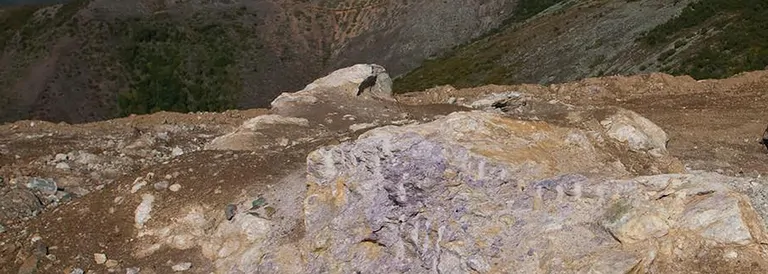
Origin of the name Charoite
The Russian geologist couple Rogov discovered the Charoite deposit in the 1960s in the area of the watershed between the Chara and Tokko rivers. It was not until 1978 that the Charoite was identified and named as a mineral in its own right; prior to that, it was considered a pinkish-purple cummingtonite schist or a purple canasite.
There are two theories for the origin of the name "Charoite": The first states that the name Charoite derives from the river "Chara" in eastern Siberia. A further possible spelling of the mineral name is therefore Tscharoit; this however neither in the retail nor in the wholesale trade became generally accepted.
According to another interpretation, Charoite refers to the Russian word "chary" which means enchanting, charming or enchanting.
Casual spellings such as chaoirt, chariot, caroit, charoid, or charoiet are not correct. Synonyms for Charoite do not exist.
The mineral is available in larger quantities worldwide only at a single deposit in eastern Siberia; therefore, the Russian state has set strict quotas for mining.
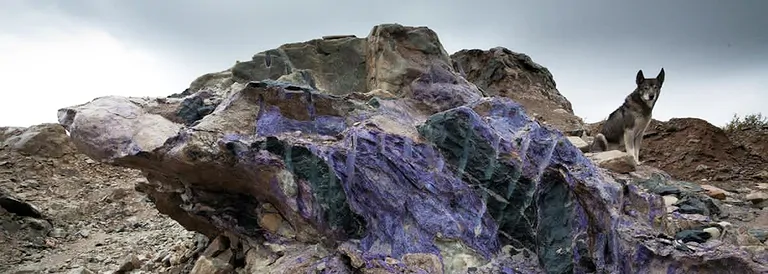
Locality of Charoite
At its location between the Chara and Tokko rivers, Charoite occurs in larger quantities - so the low availability is not due to the fact that the mineral does not have a large thickness by nature, as is the case with Peridote or Imperial Topaz, for example. With Charoite, the location of the locality is the challenge: Situated in deepest Eastern Siberia, the locality is about 1000km away from the nearest roads, thus somewhat as far away as Kiel from Berchtesgaden. The area is hardly populated, many of the places are meanwhile abandoned or only irregularly inhabited.
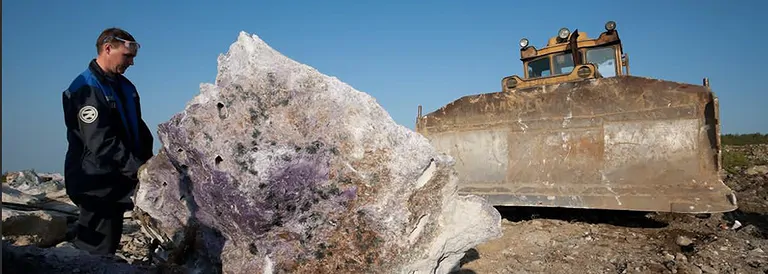
Charoite bracelets, stringed beads, tumbled stones and more here in our wholesale web store
Use and application of Charoite in gemstone healing
Its purple color and interesting structure, reminiscent of waves and swirls, make it a desirable and appealing gemstone. Charoite is traditionally used as a jewelry or therapy stone and for making sculptures and figurines used.
Do you know situations in which you feel that insurmountable mountains of work have piled up? For better coping here the stone medicine recommends the Charoite. Also when it comes to mastering profound changes in life, the stone offers a good the stone offers good help. It supports energy and determination, but also composure and resistance to worries and stress, so that it is easier to make important decisions without hesitation, and to take on duties and tasks that may arise due to prolonged inactivity. and to cope with tasks that have accumulated due to prolonged inactivity. It promotes the power of observation and is said to help dissolve extraneous constraints.
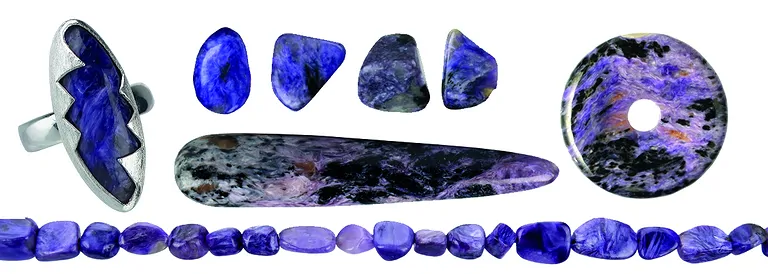
Astrology and Numerology of Charoite
American author Melody assigns Charoite to the signs Scorpio and Sagittarius
In her standard work "Sterne und Steine" (Stars and Gemstones) Barbara Newerla recommends Charoite as a balancing stone for Virgo, when this dutiful zodiac sign has once again burdened itself with too many tasks and work. With the support Charoite, spontaneity and energy are strengthened, so that upcoming tasks can be tackled energetically. One thing after another is done, calmly, step by step, everything necessary is done. Editha M. Wüst assigns the Charoite to the number 9. Number 9 to.
